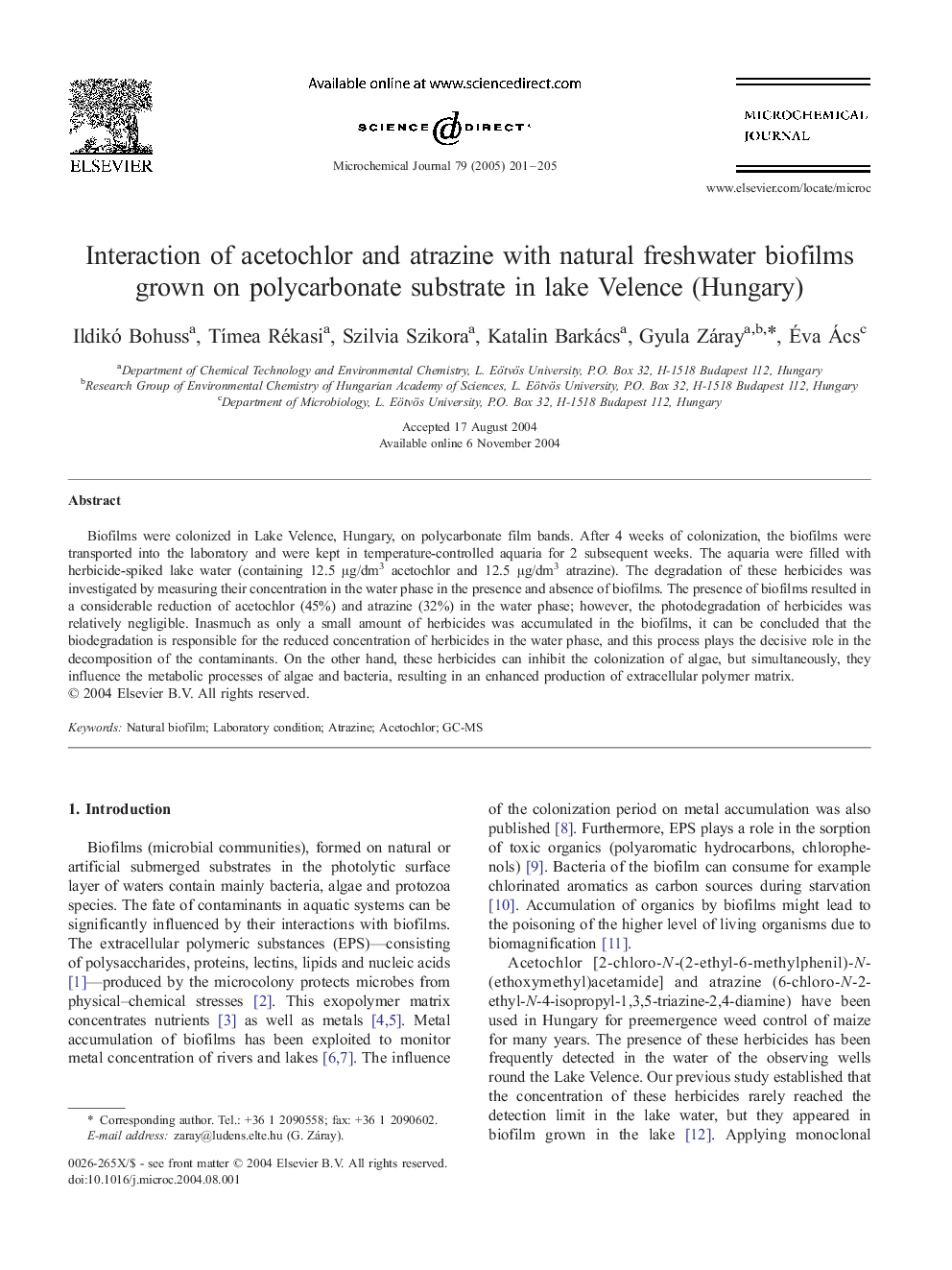| Article ID | Journal | Published Year | Pages | File Type |
|---|---|---|---|---|
| 9755037 | Microchemical Journal | 2005 | 5 Pages |
Abstract
Biofilms were colonized in Lake Velence, Hungary, on polycarbonate film bands. After 4 weeks of colonization, the biofilms were transported into the laboratory and were kept in temperature-controlled aquaria for 2 subsequent weeks. The aquaria were filled with herbicide-spiked lake water (containing 12.5 μg/dm3 acetochlor and 12.5 μg/dm3 atrazine). The degradation of these herbicides was investigated by measuring their concentration in the water phase in the presence and absence of biofilms. The presence of biofilms resulted in a considerable reduction of acetochlor (45%) and atrazine (32%) in the water phase; however, the photodegradation of herbicides was relatively negligible. Inasmuch as only a small amount of herbicides was accumulated in the biofilms, it can be concluded that the biodegradation is responsible for the reduced concentration of herbicides in the water phase, and this process plays the decisive role in the decomposition of the contaminants. On the other hand, these herbicides can inhibit the colonization of algae, but simultaneously, they influence the metabolic processes of algae and bacteria, resulting in an enhanced production of extracellular polymer matrix.
Keywords
Related Topics
Physical Sciences and Engineering
Chemistry
Analytical Chemistry
Authors
Ildikó Bohuss, TÃmea Rékasi, Szilvia Szikora, Katalin Barkács, Gyula Záray, Ãva Ács,
